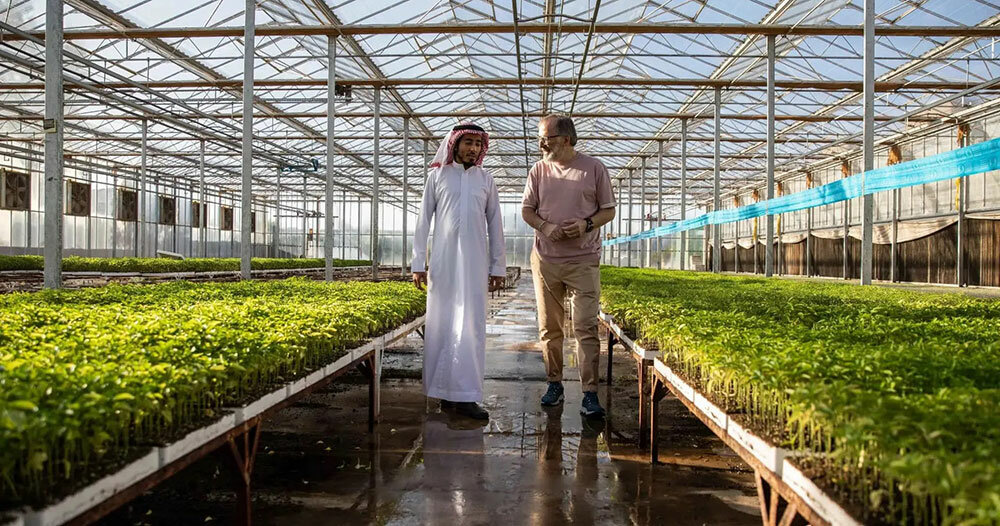Ranch to Table Vision: Monarch Farm Greenhouse Utah Agricultural Marvels
The Future of Greenhouses: Technologies in Sustainable Agriculture
Are you curious concerning the future of greenhouses and how they are transforming lasting agriculture? Look no further! In this post, we will certainly explore the exciting advancements that are leading the way for a greener and extra reliable farming sector. From sophisticated environment control systems to upright farming techniques, water-efficient watering methods, renewable resource combination, and smart information analytics, these advancements are transforming the means we grow our food. Prepare to discover the future of sustainable agriculture in greenhouses!
Advanced Climate Control Systems
To achieve ideal expanding conditions, you can depend on the improvements in greenhouses with advanced environment control systems. These systems have actually reinvented the way we cultivate crops, providing a controlled setting that contributes to plant growth. With these innovative systems, you can now adjust temperature level, humidity, light levels, and also carbon dioxide concentrations to create the excellent problems for your plants to prosper.
Among the essential features of these innovative environment control systems is their ability to regulate temperature level. By utilizing sensors and automated controls, the greenhouse can readjust the temperature based upon the certain needs of the plants. This makes certain that they are never ever exposed to severe heat or cool, which can be damaging to their growth.
Moisture control is another crucial element of these systems. By maintaining the excellent humidity degrees, you can avoid concerns such as mold, mold, and disease from influencing your crops. These systems can likewise regulate the quantity of light that gets to the plants, making sure that they receive the ideal quantity for photosynthesis.
Furthermore, progressed environment control systems can even manipulate CO2 focus. By raising the levels of CO2 in the greenhouse, you can boost plant development and productivity. This is specifically advantageous in locations with reduced natural CO2 degrees.
Upright Farming Techniques
One vital vertical farming technique is utilizing piled expanding systems. Monarch Custom Greenhouse Utah. These systems include preparing plants in multiple layers, vertically stacked on top of each other. By utilizing vertical area, farmers can maximize their crop yield without needing extra land. Piled expanding systems are generally used in metropolitan areas where area is limited.
One preferred technique is understood as vertical hydroponics, where plants are grown in nutrient-rich water without soil. This technique is very reliable as it lowers water use by as much as 90% contrasted to standard farming methods. Additionally, since the plants are grown inside, they are protected from bugs and conditions, reducing the need for pesticides.
An additional strategy is aeroponics, which involves putting on hold the plant origins in a haze or air setting. This technique permits optimum nutrient absorption and oxygenation, leading to faster growth and greater yields. Aeroponics also makes use of less water than traditional farming and can be applied in vertical systems, making it a popular selection for vertical farming.
Water-efficient Watering Methods
Optimizing water conservation is essential when it pertains to executing water-efficient watering methods in lasting agriculture. With worldwide water deficiency becoming a pushing concern, it is important to create ingenious strategies that optimize water usage in greenhouse operations.
One encouraging method is drip irrigation, which provides water straight to the plant roots, reducing waste and dissipation. By using a network of tubes with small emitters, water is used gradually and precisely, making sure that plants obtain the necessary dampness without excess overflow.
One more effective technique is the use of dirt dampness sensing units. These devices determine the wetness material in the soil and give real-time data to farmers. By checking the dirt's wetness levels, farmers can precisely figure out when and just how much water to use, preventing over-irrigation.
Furthermore, the execution of rainwater harvesting systems is acquiring appeal in greenhouse farming. Collecting rainwater from rooftops and keeping it in containers permits farmers to utilize this natural resource for irrigation functions, lowering dependence on traditional water sources.
Finally, the fostering of automated watering systems can read the article dramatically boost water efficiency. These systems use sensors to discover dirt dampness degrees and weather, readjusting watering routines appropriately. By enhancing water use based on actual plant needs, these systems can lower water waste and promote sustainable farming practices.
Renewable Resource Integration
Renewable energy combination in greenhouses offers a number of benefits, including lowered operating prices and decreased reliance on non-renewable power resources. The created power can then be made use of to run different procedures within the greenhouse, such as home heating, ventilation, and lights systems. These generators harness wind power and transform it right into electricity, which can be utilized to supplement the energy demands of the greenhouse.
Smart Data Analytics and Automation
To enhance the performance of your greenhouse operations and enhance source use, take into consideration applying smart data analytics and automation. Smart information analytics involves collecting and evaluating data from various sensors and devices within your useful source greenhouse. By keeping an eye on factors such as temperature, moisture, light degrees, and soil moisture, you can obtain important insights right into the health and wellness and development of your plants. This data can help you make notified choices regarding changing ecological conditions, enhancing watering timetables, and preventing prospective problems before they emerge.
This can consist of automating the control of illumination, ventilation, irrigation systems, and nutrient distribution. By automating these processes, you can make sure that your plants get the appropriate problems and nutrients at the right time, without the demand for consistent hand-operated intervention.
Additionally, clever data analytics and automation can interact synergistically. The data collected by sensors can be used to educate computerized systems, enabling them to make real-time changes based on the existing problems. This integration of data analytics and automation can lead to much discover this more effective and exact resource allotment, ultimately causing higher returns and better plant quality.
Final Thought
In conclusion, the future of greenhouses in sustainable farming looks appealing. With innovative environment control systems, vertical farming strategies, water-efficient watering approaches, and eco-friendly power assimilation, greenhouses are ending up being a lot more efficient and environmentally friendly.

By optimizing water usage based on actual plant requirements, these systems can minimize water waste and advertise lasting farming techniques.
